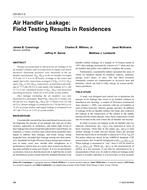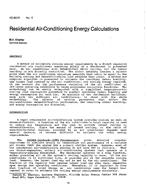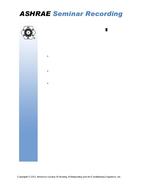Based on previous experience of monitoring over 140 residential and commercial sites by the authors, a results-oriented methodology has been developed and implemented for successfully assessing the operation and marketability of advanced HVAC equipment via a combination of field testing and test marketing. A monitoring protocol was designed to (1) accurately and reliably gather actual field performance data under an established quality-controlled procedure, (2) provide data for developing and verifying HVAC design and performance prediction models, (3) provide information for promoting the commercialization of the HVAC technology under evaluation, and (4) establish an infrastructure for both the monitoring activity and subsequent commercialization should that be recommended. This detailed and results-oriented approach, therefore, provides the means to develop credible marketing materials to promote the penetration of the technology into the appropriate market subsector and transfer the technology to the appropriate audiences that can readily utilize the information. As a result, the technology assessment is self-funding when one considers the benefits from accelerated commercialization of selected technologies.
After the specific objectives and marketing material requirements have been identified, a list of required items to be obtained from the monitored HVAC equipment is developed including acceptable design and installation practices, building owner experiences, communications needs, summaries, graphics, and tabular data. The quantitative information requirements are met by developing a detailed data point list including specifications with emphasis on accuracy, reliability, and the relationship of the data to the monitored system and the proposed analytical methods and algorithms. The qualitative information requirements are met by establishing appropriate procedures for gathering and documenting information in a planned and organized manner.
The planning phase is then documented and communicated to all responsible monitoring team members via a data acquisition and analysis (DAA) plan, which provides the backbone of the monitoring project. Using the DAA plan, the data acquisition system (DAS) is installed. Once the monitoring process is correctly initiated, on-going data collection occurs automatically including error checking, data validation, and analysis. The methodology also includes manual data checking and analysis at additional time periods to insure that accurate date are collected and that the planned objectives and results are met.
All data are analyzed and placed in the final deliverable formats as specified in the DAA plan. The results of the analysis then provide the basis for the marketing and technology transfer materials to promote the HVAC system researched.
Items 2 through 4 listed in the first paragraph are, therefore, the “results” that can be obtained from item 1 (the procedure for gathering field performance data) if it successfully implemented. Hence, the results or deliverables, in this case marketing materials, need to be clearly identified to help specify the monitoring goals, which leads to the selection of data points and verification of field performance and cost models, which is the subject of this paper.
Units: I-P
Citation: Symposium, ASHRAE Transactions, 1987, vol. 93, pt. 1, New York, NY
Product Details
- Published:
- 1987
- Number of Pages:
- 11
- File Size:
- 1 file , 860 KB
- Product Code(s):
- D-NY-87-18-1


